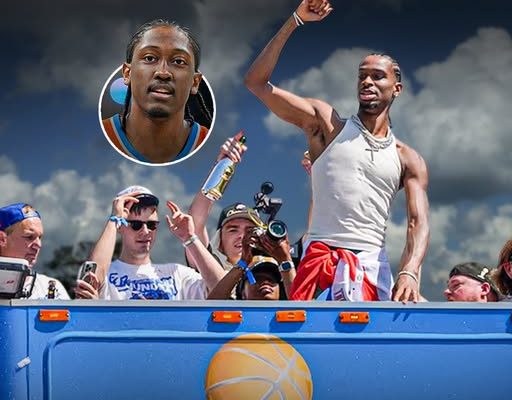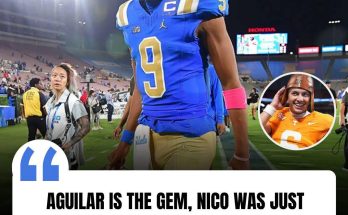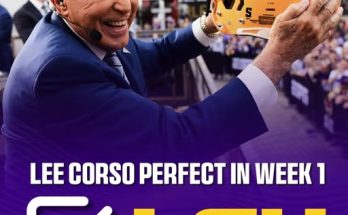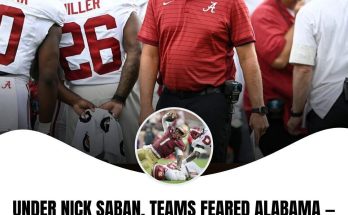When athletes reach the height of their success, celebrations often follow. In professional sports, parades are the ultimate punctuation mark—festive acknowledgments of a championship hard-earned and joyously claimed. However, in the era of social media and instantaneous judgment, these parades aren’t simply about confetti, cheering fans, and city pride anymore. They’ve become focal points for commentary, public scrutiny, and sometimes, unfair narratives. Jalen Williams, rising star for the Oklahoma City Thunder, found himself pulled into one such narrative recently: questions over the size of a crowd at a celebratory parade and what that might imply about fan support, legitimacy, or broader recognition.
Rather than let others spin the story unchecked, Williams took the moment to speak directly, not only defending his teammates and fans but shedding light on how modern athletes often find themselves battling more than just opponents on the court. They have to navigate the court of public opinion too—where attendance figures at a parade might somehow be used to undermine an entire season’s worth of success. And in that moment, Williams wasn’t just an NBA player defending his city’s pride; he was making a broader point about perception, media framing, and how athletes of this generation are expected to balance performance with public relations.
The conversation about the parade began innocuously enough. Photos and videos circulated across various platforms showing what some described as a “modest turnout” for a team event, and suddenly, the commentary shifted away from the Thunder’s on-court growth and community engagement to crowd size. In a vacuum, it might have seemed like a simple observation. But in context, it began to foster the implication that Oklahoma City—or perhaps the Thunder themselves—had failed to galvanize fan excitement or didn’t truly command the attention of the city they represent.
Jalen Williams didn’t stay silent. And in choosing to speak out, he performed one of the more important, yet often overlooked, roles of a professional athlete today: defending the spirit of the team and the fabric of its community. Williams took to social media and press availability to address what he viewed as a disingenuous narrative. He explained that measuring the success or resonance of a parade based on crowd numbers was shortsighted. Weather conditions, timing, security protocols, and even residual effects from recent societal events all play roles in determining how many people physically show up for an event. But none of that negates the pride, commitment, or loyalty that fans feel.
What Williams demonstrated is a key lesson for both athletes and observers alike—numbers don’t always tell the full story. In fact, they rarely do. A parade with 10,000 attendees might look underwhelming in drone footage, but that doesn’t mean there’s apathy in the city. And a team with a small-market identity doesn’t necessarily lack national or international appeal. What matters more is connection, and that can’t always be captured by the lens of a camera.
His remarks also served as a broader commentary on how narratives can be formed and manipulated in the digital age. Once a tweet goes viral or a media outlet posts a screenshot comparing parades across different cities and seasons, perception hardens. But context is everything. Oklahoma City is not New York, Los Angeles, or Chicago. Its infrastructure, population density, and regional culture all influence the turnout for events of this nature. What Williams pushed back against was the idea that those differences should be used to diminish or mock the accomplishments of the Thunder or their community.
Williams’ calm, yet firm, rebuttal was a lesson in media literacy. He didn’t lash out. He didn’t call names. Instead, he educated. He walked his audience through the various factors that shaped the event and offered a reminder: the size of the crowd isn’t a barometer for the size of the heart behind it. In a time where hot takes and engagement metrics often matter more than thoughtful analysis, Williams chose reflection over reaction. And that alone was telling.
For Oklahoma City Thunder fans, his words were more than just damage control—they were validation. Being a fan of a small-market team often comes with the burden of constant comparisons. Your team’s ratings are dissected, your city’s culture is questioned, and your celebrations are held under a microscope. To have one of your stars step into the fray and defend not just his teammates but the entire community? That carries meaning. It reinforces that the bond between team and city runs deeper than what outsiders may perceive.
There’s also an educational takeaway here for casual sports fans and media consumers. We often fall into the trap of measuring everything by visuals. A stadium that’s not at full capacity? Must be a lack of interest. A parade that doesn’t stretch for miles? Must mean no one cares. But these assumptions are dangerously simplistic. They ignore economic realities, demographic diversity, accessibility concerns, and even the timing of events. A weekday morning parade in July, when schools are out and people are on vacation or working? That alone affects attendance. But those details rarely trend online. What trends is a photo that tells half a story and a caption that finishes it incorrectly.
Jalen Williams stepped in to fill that gap. His willingness to address the issue head-on also signals a shift in how athletes are increasingly taking control of their own narratives. No longer are they relying solely on PR teams or post-game interviews to clarify context. With social media, they can speak directly to fans and critics alike. And when done thoughtfully, as Williams did, it can change the entire tone of a conversation.
Another point worth reflecting on is how athletes, particularly in the NBA, are becoming cultural ambassadors for their cities. It’s no longer just about scoring points or making highlight reels. Players are community symbols. When Williams spoke about the parade and the pride he felt representing Oklahoma City, he wasn’t just defending an event—he was reinforcing a connection. And for a city that has invested emotionally in its team, especially since the departure of iconic figures like Kevin Durant and Russell Westbrook, that matters.
Williams’ remarks also opened up a conversation about what we expect from athletes today. Are they merely entertainers? Are they spokespeople? Are they community leaders? In reality, they’re often expected to be all three. That’s a tall order for anyone, especially young stars still finding their footing in the league. But Williams showed that it’s possible to carry that weight with poise. He embraced the role not as a burden but as a responsibility.
It’s worth noting, too, that this wasn’t the first time a player has had to address a crowd-size controversy. Similar discussions have arisen with other championship teams across sports. The Tampa Bay Buccaneers, despite winning a Super Bowl with Tom Brady, faced criticism over their parade attendance. The Denver Nuggets, after their 2023 title, also dealt with commentary about turnout and fan engagement. Each case tells us the same thing: perception is often divorced from reality, and athletes now must be part mythbusters as well as performers.
Williams, by tackling this head-on, did more than just protect his team’s image—he offered a masterclass in framing. He reminded us that support isn’t always loud, visible, or Instagrammable. Sometimes, it’s quiet and steadfast. Sometimes, it shows up in jerseys worn on off days, in community programs supported by fans who couldn’t attend the parade, in the young kid who follows the team because he sees himself in players like Williams.
And ultimately, that’s what makes the connection between team and community real—not the size of the crowd on one particular day, but the collective journey taken over time. Williams’ defense of the parade wasn’t about ego or optics. It was about principle. It was about ensuring that a fleeting narrative didn’t erase the authenticity of something deeply felt by a city and its people.
In a world increasingly obsessed with surface impressions, his comments were a call to go deeper, to ask better questions, to withhold judgment until all sides are heard. For Oklahoma City, that moment became more than just a footnote—it became a reflection of their identity. Resilient. Unified. Unbothered by shallow criticism. And that’s a lesson any team, any city, or any fan can take to heart.
Jalen Williams’ rise in the NBA has been swift and impressive, but what’s becoming even more apparent is his growth as a leader off the court. His response to the parade narrative wasn’t merely a media rebuttal—it was a reflection of a young man learning how to use his platform with purpose. He didn’t need to make noise to be heard; he simply needed to speak with authenticity. And in doing so, he reminded everyone—from analysts to fans to fellow athletes—that dignity and truth still matter in a world obsessed with impressions.
As sports continue to evolve and players are given more access to their audiences than ever before, how they respond to moments like these will shape their legacy just as much as their on-court accolades. Jalen Williams made it clear that he understands this. His words weren’t just for Oklahoma City—they were for every athlete, every fan, and every critic who has ever misunderstood what truly makes a team special. And in that moment, he didn’t just defend a parade. He celebrated a connection too deep to be measured in headcounts.



